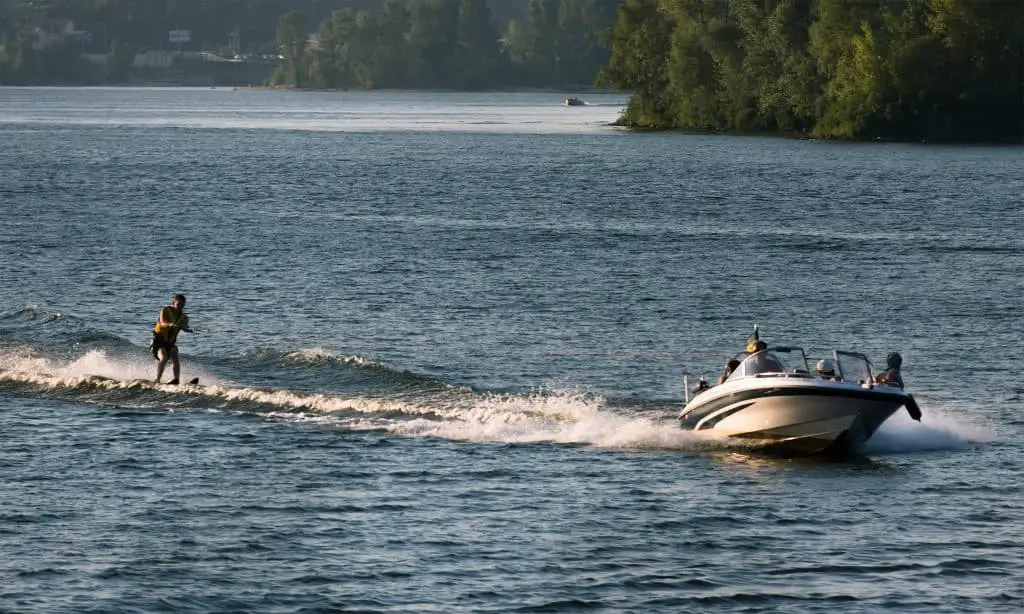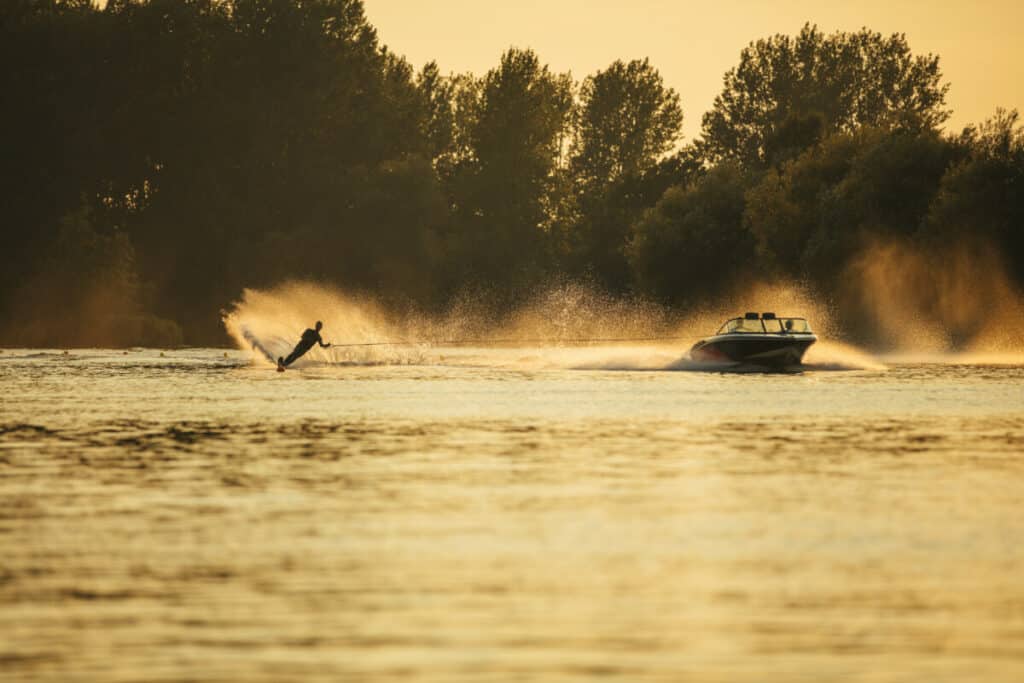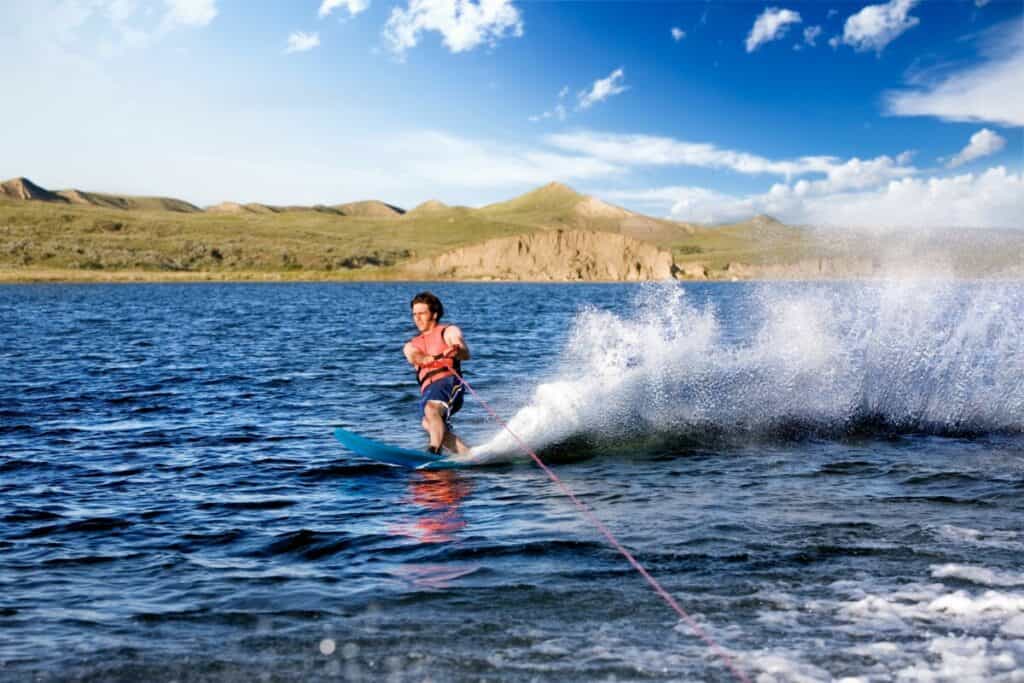Sometimes, when you’re out on the lake waterskiing with friends or family, you don’t want to stop towing one skier. You want two or more skiers out on the water at the same time. It’s important, then, that you have the right length of rope so that multiple skiers at the same time can be as safe as possible.
The tow lines should be the same length when towing multiple skiers. Tow lines that are different lengths can cause more safety issues because one skier can get caught in the other’s line. It is important to have an observer at the back of the boat and for both skiers to know the hand signals.
Having the right length of rope is very important, but it is not the only thing that will keep your two or more skiers safe while they are out on the water.
Ideal Tow Line Length
When towing someone behind a boat using a rope, you may imagine that the length of the rope is important to consider. Ropes that are too long or too short may be hard to use at best and dangerous at worst. When towing two or more skiers behind the boat, another consideration of rope length comes into play: how long both ropes should be in relation to one another.
No matter what length the towing ropes are, all the ropes must be the same length. This is true if you are towing two skiers or twenty (though it may be difficult to tow that many people behind a normal-sized boat).
All of the ropes need to be the same length. This may seem dangerous because the skiers could run into one another if they get too close, as they are at the same level. However, it is much more dangerous for the ropes to be different lengths.

If the ropes of multiple water skiers are different lengths, that means that the skier with the shorter line will be skiing next to the other skier’s line rather than the other skier. The skier on the shorter line is more likely to run into the line than they would be if they were on the same level as the other skier.
This is because the lines tend to continue away from the boat at an angle. They are tied next to one another on the boat, but they get farther away. The skier is closer to the line than they would be to another skier, and it is harder to get away from the line.
Though it wouldn’t be good to run into the other skier, it would be even worse to run into their line. Getting caught by the other skier’s line will knock both skiers off balance. The skier on the shorter line may also get tangled up in the line. This will definitely cause an annoying mess to untangle.
The tow line could also get wrapped around the skier’s neck or pull them underwater. It is difficult and confusing to untangle the tow line from a suffocating skier, and it may result in injury or death.
Having tow lines of the same length will prevent this and keep the skiers safe. Make sure that you purchase tow lines that are the same length. If you already own the tow lines but they are different lengths, do not use them at the same time. You’re going to have to have your skiers go out one at a time if you don’t have enough ropes of the same length.
The average recommended length for a water skiing tow line is 75 feet. This gives the skier plenty of distance from the back of the boat without them being too far away. Different types of water skiing may require longer or shorter tow lines, and experienced skiers may use longer ropes that are more conducive to performing tricks.
However, the average towing line is around 75 feet, and it is a good length for a beginner to start at. If one or both of your skiers is a beginner, it is best for you to use ropes of lengths close to 75 feet.
How to Keep Both Skiers Safe

Having the right length of rope is not the only important thing to focus on when keeping two or more skiers safe when they are being towed at the same time because it is more dangerous than towing one skier. There are some important safety skills to remember when towing a skier, whether there is one or multiple.
There needs to be a person on the back of the boat observing the skiers. This person makes sure that the driver stops when the skiers let go or fall so that they don’t get too far away from the person in the water. The observer can also keep an eye on the distance the skiers are from one another and help them know if they need to try to get further away.
The observer is also the line of communication between the skiers and the driver. The skiers need to be able to ask the driver to speed up, slow down, or stop. The driver needs to tell the skiers if they are turning so that the skiers can prepare for it.
There are hand signals that the skiers, driver, and observer all need to know so that they can communicate properly. It is easier for the driver and the skiers to communicate if the observer can communicate the hand signals to them and make them easier to see.
Of course, it is also important for the skiers to have the proper flotation devices, be the right distance away from the shore and other boats or obstacles, and not to water ski at night. These are considerations that need to be made, whether there is one skier or two or more.
Water skiing can be dangerous if not done correctly, and it is important that the right precautions are taken to keep the skiers safe.
Project “Two Is Better Than One” Boating
Check out our article on: How To Clean Vinyl Boat Seats Of Mildew (Easy Tips!)

